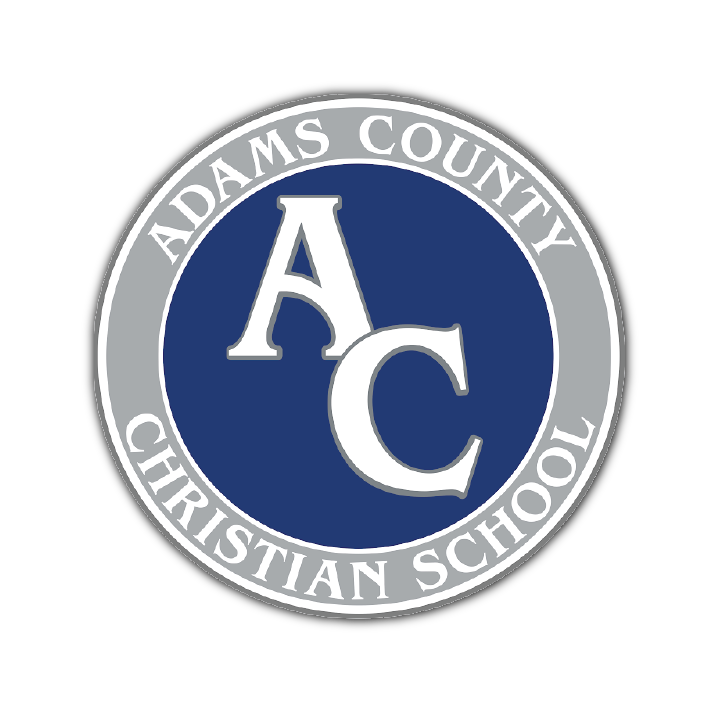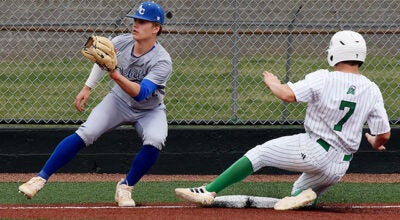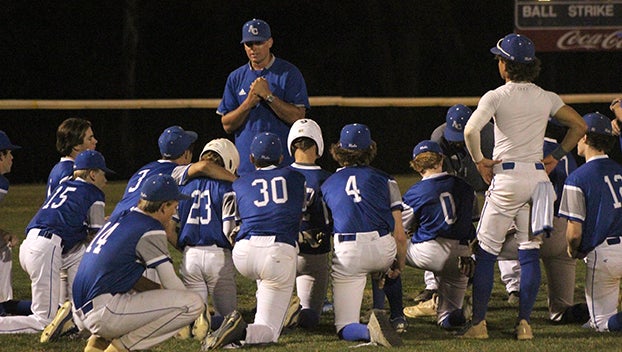ON THE OFFENSIVE
Published 12:01 am Sunday, October 21, 2012

LAUREN WOOD | THE NATCHEZ DEMOCRAT — Natchez High School offensive coordinator Trey Woodard goes over plays with football players at the beginning of practice Tuesday afternoon.
NATCHEZ — Natchez High School offensive coordinator Trey Woodard’s goal is to run an offense that’s fun for athletes.
The spread offense is NHS’s offense of choice, and Woodard said there are several advantages to running it.
“You don’t have to outmuscle people, and you get more athletes on the field,” Woodard said. “If you’re successful, you get more kids touching the ball, and more kids will want to play in it.”
As its name implies, the spread works by having teams “spread” out their athletes in order to get them to make plays in space. Teams will often line up three, four or five receivers with the quarterback in shotgun so the defense will also spread out in coverage, with the idea of attacking a defense that’s so spread out.
But while the spread is popular in football from the high school level all the way to the pros, not every local team employs it. Block High School runs the double wing offense, Ferriday High School goes with more of a pro-style look, and several other local schools try to do unique things on the offensive side.
Natchez High’s spread offense
NHS’s offensive success comes down to one major key: having wide receivers that can make plays.
The spread offense that the Bulldogs employ relies heavily on its wide receivers to make plays. Woodard said having a good quarterback, offensive line and running backs are important, but the ability of his team’s receivers was absolutely critical.
“You have to have wide receivers that can beat man coverage,” Woodard said.
“You can adapt to (limitations at the other positions), but if you don’t have wide receivers that can play and beat man coverage, it doesn’t matter what you’re doing, they can just play zero and load the box.”
Cover zero, to which Woodard is referring, is a defensive alignment where any potential receiver is given man-to-man coverage by the defense, and the defensive line is stacked. If the receivers can’t make plays, it severely limits NHS’s offense when the defense is aligned in cover zero.
While some might call the spread a finesse offense, Woodard said it’s still important to play physical football.
“It’s finesse in that you’re not trying to overpower people, but if you can’t win in short yardage, you can’t win in the red zone,” Woodard said. “We feel we can be physical out of the spread.”
Other programs might throw out of the spread most of the time, but Woodard said his team’s offense goes with its players’ strengths.
“Our ratio is 65-35 run-pass,” Woodard said. “With (former quarterback) Javon (Washington), it was way different. We want to run the ball. Some people want to spread it out and throw every down. It just depends on the program.”
NHS head coach Lance Reed said his team employs an up-tempo, no-huddle offense in order to try and catch teams off guard and wear them down.
“We like to utilize the fact that we can visualize what the defense does and attack the defense’s weakness,” Reed said. “We try to see what they’re in and call favorable plays based on that.”
While receivers are important for his team, Reed also said a good quarterback is needed, too.
“We need confidence we can make plays and make good decisions back there (at quarterback),” Reed said. “Obviously, you have to have playmakers, and the offensive line has to protect. It all comes together.”
Woodard said teams will line up in cover zero if they feel their athletes can match up with the Bulldogs’. If not, he said they’ll usually focus on stopping the run and hope they don’t give up big plays.
One potential drawback to NHS’s up-tempo style is that the Bulldogs’ defense is forced to play a lot of snaps instead of getting rest while the offense is burning time off the clock.
“Your defense will have to play more possessions, which means they’ll have more chances to give up points,” Woodard said. “We look at it like Oregon does, getting a certain number of stops. If you do, you’re going to win.”
Block High’s double wing
offense
As a former two-way lineman, Block head coach Benny Vault Jr. was naturally drawn toward the physical nature of the double wing offense.
The double wing is a run-oriented offense that uses two wingbacks, two tight ends and a fullback. The wingbacks and fullback are the team’s primary rushing leaders, and Vault said he only throws the ball approximately 5 percent of the time.
“I just like the rough, tough style of offense,” Vault said. “There’s a lot of misdirection. Very seldom do we have a play where we lose a yard on offense. As long as you can stay within the chains, it’s a very effective offense.”
Vault said he distributes the ball equally among his wingbacks and fullback, and his rushing leaders have to be tough players, since they’re getting the bulk of the action on offense.
“I like to run between the tackles,” Vault said. “Every time we run outside, no matter how many yards we get, you hear me fussing.”
A good offensive line is critical to the Bears’ success on offense, but Vault said he likes the offense because you don’t have to have the best athletes in the world to run it.
“You don’t have to have a great quarterback, you don’t have to have great receivers,” Vault said.
He also said the physical nature of the offense allows his team to wear opponents down while keeping the ball for long periods of time and using up time on the clock.
“With us playing teams that have people playing both ways, it beats on the defense,” Vault said.
Teams usually defend the double wing by stacking the defensive line and trying to get penetration into the Bears’ backfield, Vault said.
“They’ll put 12 to 13 in the box,” Vault joked. “That’s what it seems like, anyway.”
But Vault said his team is averaging 75 to 80 yards per game passing, which helps take pressure off the Bears’ running game.
“If we can get them to seven or eight in the box, we’re good,” Vault said. “If they start stacking the box, it gets tough, especially if they’re big.”
Ferriday High School multiple pro-style offense
Cleothis Cummings stepped in to coach the Ferriday High School football team in mid-July.
The first-year head coach had been an assistant with the Trojans for years, but it was his first time installing an offense, and he had just one fall camp to do so.
With that in mind, Cummings knew it would take more than one season to see the offense that he eventually wants to run, and this year he went with an offense that uses multiple sets and more of a pro-style approach.
“We are young and are trying to find our way,” he said. “The kids understand what we are trying to do offensively.”
With a freshman quarterback in Ronald Davis, Cummings has also had to simplify the passing game he hopes to eventually see the Trojans utilize.
“I like to see the ball in the air,” he said. “But this season we’ve had to keep it more 50/50.”
Cummings likes the idea of a spread offense and eventually would like to see the Trojans look a lot like their cross-river rivals from Natchez.
“I’d say the type of offense I’d love to see is similar to Natchez,” Cummings said. “We’re kind of a mirror-image of Natchez, and we’d like to get to that point. They do a lot of things well, and coach Reed does a good job.”
Adams County Christian School
Fans of Trinity Episcopal School might not notice much of the offense they saw for years when they watch Adams County Christian School this season.
Rebels’ head coach David King has been forced to adjust his offense multiple times this season due to personnel issues and injuries.
Normally, King would have his offense running as many plays as possible and spreading the ball to as many hands as he can get on the field a la West Virginia or Oregon. But injuries have limited the offense and the defense this year, and King has had to switch to a more ball-control offense.
“We’ve had to juggle around what we do every week,” he said. “We’re really not doing some things I’m accustomed to doing.”
This season Rebel fans have seen several different players taking snaps, including Lester Wells, Brandon Ross and Trey Fleming. Wells and Fleming generally run when the snap comes to them, and Ross is more of the passing quarterback — although all three have the ability to do both.
A lot of times two of those players will line up in the shotgun ready to accept a snap, and the play called at the line of scrimmage will determine who receives the snap on that particular play. King generally calls the plays with the players already at the line of scrimmage without a huddle.
Vidalia Box offense
The Notre Dame Box, the old Princeton offense, the single wing — there are a lot of names attributed to the offense that fans of Vidalia High School see their team running this year. But head coach Gary Parnham Jr. calls his offense the box, and it is designed to deceive and overpower the defense.
“A lot of people do the same kind of thing, and it’s good at hiding the football,” he said. “There’s a lot of misdirection, and the defense definitely has a hard time finding the football.”
In the Vikings’ base formation, all 11 players are bunched at the line of scrimmage with no one split out at wide receiver. The team uses an unbalanced line to overpower the defense at the point of attack on the strong side and can use misdirection to run to the weak side.
At times Vidalia can split receivers out of the base formation, but the same principles are still in tact.
“It has evolved into other things that we want to do,” he said. “Sometimes we can go to three-wide when the defense has nine or 10 guys in the box.”
Parnham said this offense is slightly different than the one the coaching staff put in during spring ball called flex. But that offense was scratched when starting quarterback Michael Whitley went down with an injury.
The box is designed to wear defenses down with a powerful running game and then sprinkle in some misdirection or passes to hit bigger plays.
“It’s kind of like the wishbone, where you run so much it eats up a lot of clock and you dont score a whole lot because you keep the ball.”
Freshman Jonterrius Townsend took over the quarterback reins when Whitley went down, but he is only a quarterback in name.
“We really don’t have a quarterback,” Parnham said. “It’s four-backs, a wingback, an upback, a tailback and a fullback, and we can snap it to any one depending on what play we’re running.”
Parnham said the team passes out of the offense approximately 10-12 times a game to keep defense honest. The offense also allows multiple players to get an opportunity to carry the ball, and the Vikings usually split the carries evenly between the four backs.




